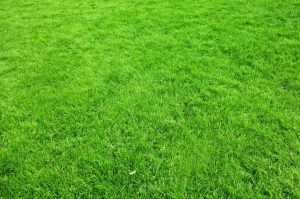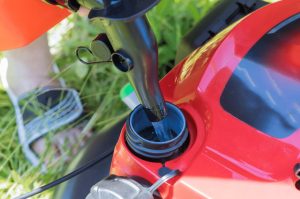As we journey through the vast landscapes of Australia, we often overlook the intricate beauty and adaptability of our native grasses. These grasses, deeply rooted in our soil and culture, offer aesthetic appeal and ecological benefits that many gardeners and landscapers might be unaware of. From the sun-drenched coasts to the arid interiors, these grasses have thrived and evolved, making them perfect candidates for sustainable gardening.
In this guide, we’ll share our personal experiences, insights, and knowledge we’ve gathered over the years, helping you identify and appreciate the richness of Australian native grasses. So, delve into this comprehensive guide because Australian native grasses hold the secret to a resilient and beautiful garden.
Understanding Australian native grasses
Australia, with its vast landscapes and diverse climates, has been home to many native grasses that have evolved over millions of years. These grasses have witnessed the continent’s transformation, from its separation from the supercontinent Gondwana to the present day. Over time, they’ve adapted to the unique challenges the Australian environment poses.
The soils of Australia are characterised by their age and, in many places, their lack of fertility. They’ve been subjected to millions of years of weathering, leading to often shallow and infertile soils. Yet, our native grasses have thrived. They’ve developed deep root systems to tap into the moisture and nutrients available in the subsoils. These adaptations allow them to survive in challenging conditions and make them resilient to the frequent droughts and high summer temperatures that Australia experiences.
Moreover, the sporadic grazing from Australia’s native fauna, like kangaroos and wombats, has also shaped the growth and spread of these grasses. They’ve evolved to be hardy, able to regenerate quickly after being grazed upon.
Native grasses’ role in the ecosystem
Native grasses play a pivotal role in the Australian ecosystem. They form the foundation of many habitats, providing shelter and food for many wildlife species. From the tiny insects that burrow in the soil to the larger mammals that graze upon them, native grasses support a complex web of life.
One of the primary benefits of native grasses to the environment is their ability to prevent soil erosion. Their extensive root systems hold the soil together, reducing the impact of wind and water erosion. This not only preserves the soil but also ensures that our waterways remain silt-free, benefiting aquatic life and water quality for human consumption.
Furthermore, these grasses play a crucial role in carbon sequestration. They absorb carbon dioxide from the atmosphere and store it in their roots and the soil, helping mitigate climate change’s effects.
For many of Australia’s native animals, these grasses are a primary food source. They provide sustenance for herbivores like kangaroos, wallabies, and various bird species. Moreover, they offer habitats for insects, a food source for many other animals.
In essence, native grasses are the unsung heroes of the Australian landscape. They not only beautify our surroundings but also ensure the health and balance of our ecosystem.
Identification guide to Australian native grasses
When we delve into Australian native grasses, it’s like opening a book filled with stories of evolution, adaptation, and resilience. But to truly understand and appreciate these grasses, one must know how to identify them. Identifying native grasses can be a rewarding experience, allowing us to connect more deeply with our environment and the unique flora that calls Australia home.
Basic principles of grass identification:
- Observation: Before diving into the technical aspects, take a moment to observe the grass. Look at its overall form, height, and the way it grows. Does it grow in clumps or spread out? Is it tall and slender or short and bushy? These general observations can often provide initial clues.
- Habitat: The environment in which the grass grows can offer significant hints. Some grasses prefer wetlands, while others thrive in arid regions. Noting the habitat can narrow down the possibilities.
- Season: Different grasses have different growing and flowering seasons. The presence or absence of flowers and seeds can be a crucial identification factor.
Key parts of native grass plant for identification
- Leaves: Examine the shape, width, and length of the leaves. Some grasses have broad leaves, while others are needle-like. The arrangement of leaves on the stem, alternate or opposite, can also be a distinguishing feature.
- Stem: The stem, or culm, can be hollow or solid. Its texture, whether smooth or hairy, and its colour can provide valuable identification clues.
- Flower heads (Inflorescence): This is often the most distinctive part of a grass plant. The flower heads’ arrangement, size, and shape can vary widely among species. Look for details like the number of spikelets, their arrangement, and any unique features they might have.
- Seeds: The seeds’ size, shape, and colour can be distinctive. Some grasses have tiny seeds, while others have large, noticeable ones.
- Ligule: This is a small structure where the leaf blade meets the stem. It can be membranous, hairy, or absent and is a vital identification feature for many grasses.
- Auricles: These are ear-like projections at the base of the leaf blade. Not all grasses have them, but when present, they can be a key identifying feature.
Remember, while these guidelines provide a foundation, identifying grasses can sometimes be challenging due to the sheer diversity of species. Cross-referencing with reliable resources like this Environment SA guide or botanical textbooks is always a good idea.
Additionally, of course, practice makes perfect. The more you observe and identify, the more familiar you’ll become with the unique characteristics of each species.
Detailed profiles of common native Australian grasses
The following are some of the best native Australian grasses that our plant gurus suggest for homeowners looking for a more natural way to add grasses to their yards and gardens.
1. Honey reed grass

This fast-growing grass with drought-tolerant features is perfect for landscape use in gardens and along baths and rock areas. Its glossy green leaves grow in clusters and produce cream to yellow flowers throughout spring.
Honey reed will thrive in most conditions where it can tolerate a range of sun exposures and does well in dry to moist soils. Once established, these plants require little care and stay in a compact form that works wonderfully as mid-range grass with a mature size of 1 metre by 1-metre max.
2. Weeping rice grass

These native grasses thrive in Australia’s cooler regions and do best in part-shade. You can mow this grass to keep it short and use it to replace traditional lawn grasses easily. Weeping rice grass is native to wetter climate zones but will handle droughts fairly well.
Be sure not to use it in high-traffic areas as it doesn’t hold up well to that kind of wear and tear. It is also susceptible to damage from dog pee, so keep the dogs off it to keep it looking its best. When left to grow naturally without mowing, it will reach a size of 30-75 cm.
3. Wallaby grass

This native grass can be found in most temperate regions of Australia. It’s recognised by its white tufts, which is why it is also often known as White Top grass. These native grasses will also attract bees and butterflies to the garden.
So long as the soil has good drainage, wallaby grass will do well in just about any soil in your yard. It is also tolerant to heat and cold, making it ideal for many home gardens. If you mow, it doesn’t go shorter than 4cm, or it may die back too easily, or you can let it mature at around 20-90 cm.
4. Kangaroo grass

This is perhaps the most well-known and widely accessible native grass in Australia. It grows in every territory and can be found everywhere in landscapes. It’s easily recognisable by its long stems and leaves that resemble a kangaroo paw.
The leaves change colour with age, going from green to red. The seed heads are also red and colourful when they emerge in spring and autumn. They are low maintenance when they are well established in the landscape. They handle drought better than cold and reach a mature size of 1.5 metres.
5. Bottlebrush grass

Known by many other names, including shuttlecock and bottle washers, this grass is known for the unique shape of its flower and seed heads- they look like fluffy bristles. It is also unique because no other grass has seeds like this, making it easy to identify.
Young grass starts off green and turns golden brown as it matures. This bottlebrush grass is low maintenance and easy to care for. It thrives in the sun but can handle partial shade and does well in most soils found in Australia. Its stalks can be 1.5 metres, but the grass maxes at around 30 cm.
6. Spreading flax lily

A very common species of ornamental grass, this Australian native is known and highly sought after for its purple-blue flowers and brightly coloured berries.
Spreading flax lily features strap-like green foliage and makes for a lush and attractive mass planting in the garden. It is also commonly used as a border plant or to fill in gaps among other flower bed plantings. It will thrive in full sun to part shade and has a mature size of around 1 metre by 1.5-metre spread. If desired, it can be cut back and maintained in a more compact size with minimal fuss or maintenance.
7. Coastal tussock grass

The final native Australian grass highlighted here features arching thin leaves with blue-green foliage. It has a compact growth habit and works well in the landscape. This native grass loves the sun and is highly tolerant to salt and wind, which makes it an ideal choice for coastal homes and gardens.
This grass’s unique shape and colour serve as a beautiful contrast to more traditional plants and make for a stunning and eye-catching display when used in mass plantings. At a mature age, this grass will hit around 45 cm in height and spread.
Tips for grass enthusiasts
You’re in for a treat if you want to bring a touch of the Australian landscape into your garden or backyard. Native grasses add beauty, support local wildlife, and require less maintenance than many exotic species. Here are some tips to get you started:
- Right grass for the right place: Just as we have our favourite spots in the garden, so do our native grasses. Some prefer full sun, while others thrive in the shade. Before planting, research the specific needs of the grass species you’ve chosen.
- Soil preparation: While many native grasses are adaptable to various soil types, preparing the soil’s always a good idea. Adding some compost can give the grass essential nutrients to kick-start its growth.
- Spacing: Give your grasses room to grow. Plant them at a distance so they have space to spread out and establish their root systems.
- Mulching: A layer of mulch around your grasses can help retain soil moisture, suppress weeds, and regulate soil temperature.
- Wildlife-friendly: One of the joys of cultivating native grasses is the wildlife they attract. Consider planting grasses that are known to attract native birds, insects, and other fauna.
- Experiment: Don’t be afraid to experiment with different species and combinations. Native grasses come in various colours, sizes, and textures. Mix and match to create a visually appealing landscape.
Additionally, for those keen on complementing their native grasses with other plants, our guide on 12 Low Maintenance Hedge Plants in Australia offers valuable insights.
Maintenance and care
Native grasses, with their deep roots and adaptability, are relatively low-maintenance. However, a little care can go a long way in ensuring they thrive in your garden.
- Watering: While native grasses are drought-tolerant, they’ll appreciate some water, especially during the establishment phase. Water deeply but infrequently to encourage the roots to grow deep into the soil. Once established, they’ll require minimal watering.
- Soil requirements: Native grasses are champions in adapting to different soil types. However, well-draining soil is a plus. If your soil is too clayey, consider amending it with sand or organic matter to improve drainage.
- Pruning: Some native grasses benefit from occasional pruning to remove old growth and encourage new shoots. Prune during the dormant season, cutting back to about a third of the plant’s height.
- Pest control: While native grasses generally resist pests, watch for any signs of infestation. If you notice pests, consider using natural or organic methods of control. Encouraging beneficial insects, like ladybugs, can be a great way to keep pests in check.
- Fertilising: In general, native grasses don’t require much fertilisation. If you choose to fertilise, opt for a slow-release, low-phosphorus fertiliser. For more information, see our guide on the best fertiliser for Australian natives.
- Mulching: Refresh the mulch around your grasses annually. This will continue to suppress weeds and help retain soil moisture.
Remember, the key to a thriving native grass garden is to work with nature, not against it. By understanding the needs of your chosen species and providing a little care, you’ll have a beautiful and environmentally friendly garden.
Resources for further learning
For those of you keen to delve deeper into the world of Australian native grasses, there’s a wealth of resources available. From books penned by experts to online communities where enthusiasts share their experiences, here’s a list to get you started on your journey:
- Commonwealth Journal of Australian Plants
- Australian Flora Foundation
- Australian Native Plants Society
Conclusion
In wrapping up our exploration of Australian native grasses, it’s evident that these remarkable plants are more than just a backdrop to our landscapes. They embody the resilience, beauty, and diversity of Australia itself. As we’ve journeyed together through this guide, we hope you’ve gained a newfound appreciation and understanding of these grasses. Their adaptability and ecological significance make them invaluable assets to any gardener or landscaper.
By embracing and incorporating these native wonders into our gardens, we celebrate our unique Australian heritage and contribute to a sustainable and vibrant ecosystem. Here at Yard Work, we encourage you to continue gardening with these native gems, ensuring a greener and more flourishing future for all.
FAQs
How many native grasses are there in Australia?
There are over 1,200 species of native grasses in Australia, each uniquely adapted to the diverse climates and landscapes of the continent.
What lawn grass is native to Australia?
Kangaroo, Wallaby, and Weeping rice grass are popular lawn grasses native to Australia, known for their resilience and adaptability.
What is the easiest native grass to grow?
In our experience, Kangaroo grass is one of the easiest native grasses to grow in Australia due to its drought tolerance and ability to thrive in various soil types.






